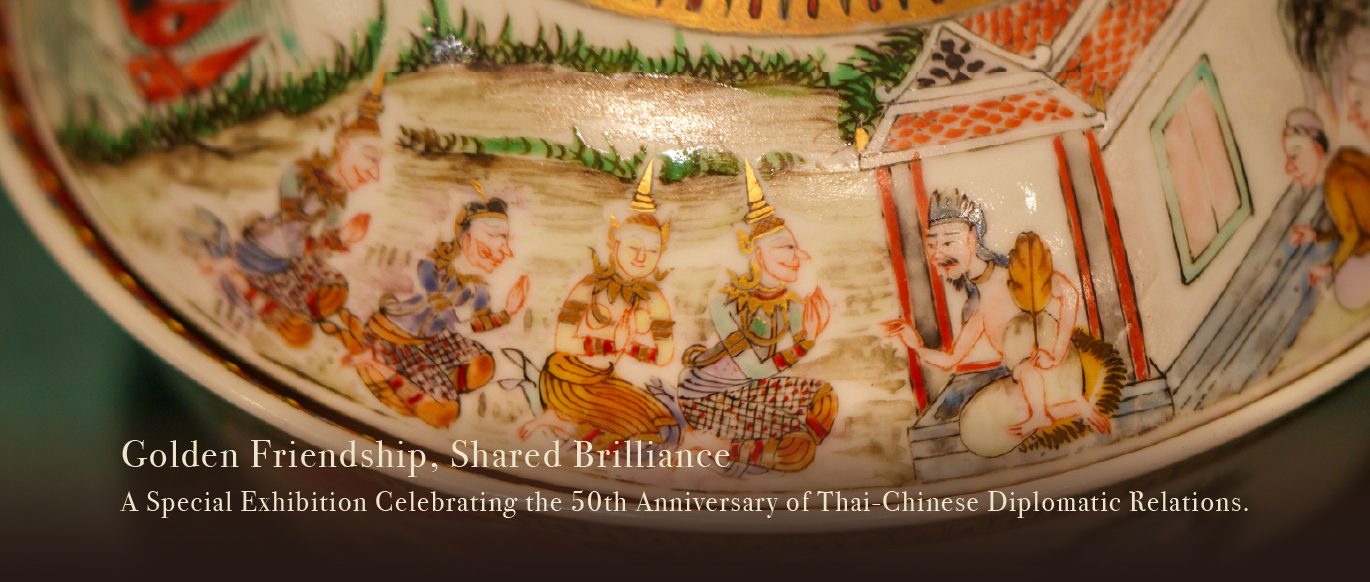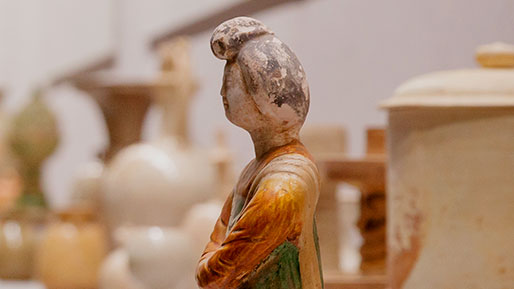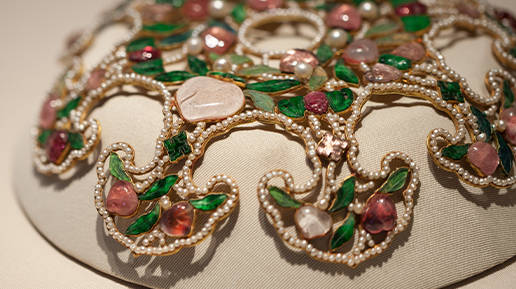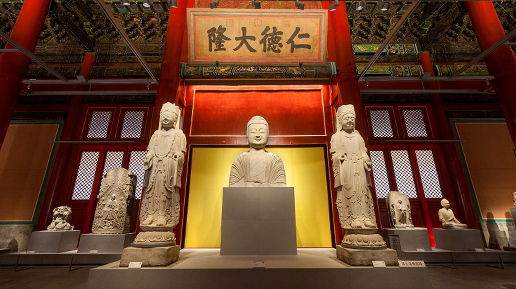Daoism and Buddhism are two of the major themes in traditional Chinese painting, while, comparatively speaking, paintings of the latter are attached greater importance. In the long course of Buddhist paintings\' development, a substantial number of related themes or styles are formed, amongst which those depicting Arhats can be counted as one. Of all categories of Buddhist paintings, few equals the Arhat paintings in terms of the time span of its development, the enormous quantity, and the number of artists engaging in its depiction.
The exhibition Prowess in Taming Dragon and Tiger: Arhat Paintings in the Palace Museum Collection selects the cream of the crop from the Museum\'s collection, of which a large proportion exhibited for the first time, offering precious opportunities for their appreciation and close study. In Ding Guanpeng\'s copy of Ding Yunpeng\'s Eighteen Arhats Scroll, the figures travel amongst trees mounting mythical animals, which, more often than not, are portrayed with stunningly creative imagination – tianlu unicorn with greenish skin and hair, unicorn-like lion with crimson hair, two-horned horse, deer without horn, unicorn with elephant head, bat wings, and lion body, oxen with deer or badger-like heads, for instance. The Arhats\' draperies are traced with crisp and vigorous brush lines and handsomely colored. Wang Fangyue\'s Five Hundred Arhats at Longevity Hill Scroll with Records composed and written by the Qianlong Emperor painted the Arhats\' statues at a Buddhist temple on the Longevity Hill in Beijing\'s western suburb. The temple is a copy of Hangzhou\'s Temple of Pure Benevolence (Jingci si), which the Qianlong Emperor visited during one of his Southern Inspection tours. In 1756, the Emperor commissioned the Record of Five Hundred Arhats at Longevity Hill and ordered the completion of the painting, with imperial inscriptions, by Wang Fangyue in the following year. Aside from the captions and realistic depiction of the scenes, each of the ten sections of the blue-and-green-style landscapes has its shades of distinctions under the organically harmonious appearance; in the meantime, the Arhats are rendered in highly imaginative gestures – such as those with closed palms above the head, clapping cymbals, stretching arm to grab stars, playing with tigers, carrying peach trees, or floating above the ground.
For art lovers, the exhibition offers delightful aesthetic experiences. The paintings with Arhats each showing his special prowess are imbued with fascinating narrative features. For devoted Buddhist followers, it is also a special religious and cultural journey.
Feedback
Your feedback
Verification Code








